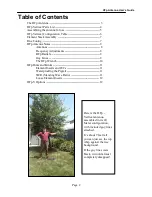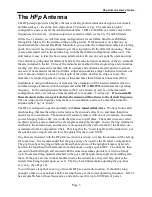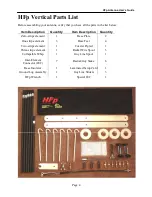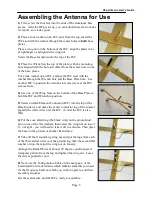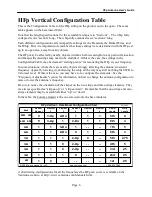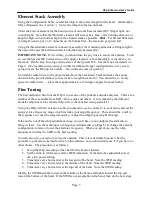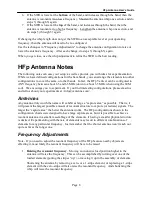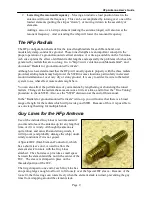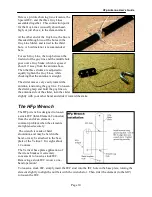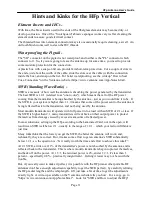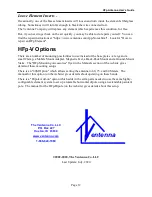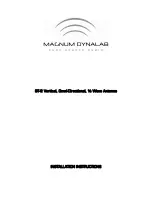
HFp Antenna User’s Guide
Page 8
6.
If the SWR is lower at the
bottom
of the band, and increases through the band, then the
antenna is resonant at too low a frequency. Shorten the antenna whip one section, and do
steps 3) through 5) again.
7.
If the SWR is lower at the
top
of the band, and increases through the band, then the
antenna is resonant at too high a frequency. Lengthen the antenna whip one section, and
do steps 3) through 5) again.
If changing the whip length does not get the SWR to an acceptable level at your operating
frequency, then the antenna will need to be re-configured.
Use the techniques in "Frequency Adjustments" to change the antenna configuration to raise or
lower the antenna’s frequency. After each change, do steps 3) through 5) again.
When you get close, use the whip adjustment to refine the SWR to the best reading.
HFp Antenna Notes
The following notes can ease your setup, as well as provide you with ideas for experimentation.
While we have defined configurations for the ham bands, you can arrange the elements into other
configurations to cover the same, or other bands. In fact, the HFp Vertical can be configured to
ANY frequency between about 6.5 and 65 MHz (down to about 3.5 MHz when using the 80M
coil). We encourage you to experiment. If you find interesting configurations, please email us
and tell us about your experiments at <info@ventenna.com>.
Antennas
Any antenna truly worth the name will exhibit as large a “capture area” as possible. That is, it
will present the largest possible amount of resonant structure to capture (or radiate) signals. The
larger the “capture area” the better the antenna works. The HFp configurations shown in the
configuration charts were designed to have large capture areas, but it is possible to achieve a
resonant antenna in a smaller assemblage of the elements, if having a smaller physical structure
is desired. Experimenting with the mix of elements may result in different combinations of
elements for any particular frequency. Just remember that the shorter antenna won’t reach out
quite as far as the longer one.
Frequency Adjustments
Note - If you need to adjust the resonant frequency of the HFp because nearby objects are
affecting it, most likely the resonant frequency will have to be raised.
1.
Raising the resonant frequency
– Moving an inductive load position higher in the
antenna will raise the frequency. This can be accomplished by turning over one of the
loaded elements (putting the stripes “up”), or moving it up in the assembly of elements.
Shortening the antenna by removing a zero- or a 1-stripe element, or replacing a 1-stripe
element with the zero-stripe will also raise the resonant frequency. And shortening the
whip will raise the resonant frequency.


